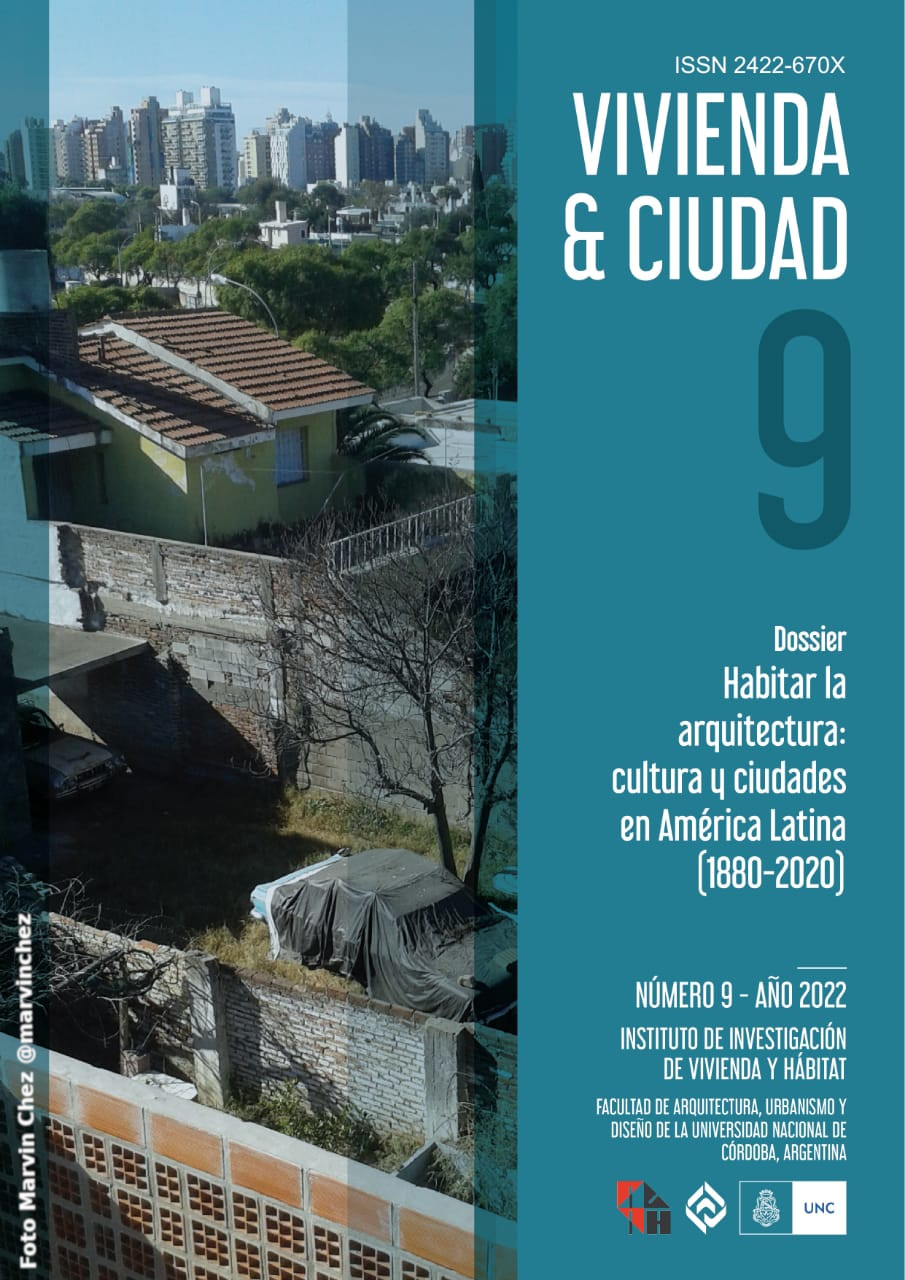Inhabiting the image. Filmic visions of life in mexican social housing.
¿a dónde van nuestros hijos? and Rojo Amanecer.
Keywords:
Cinema, Social Housing, Inhabiting, ModernityAbstract
This article analyzes two films that, at different moments in the history of mass housing in Mexico City, shed light on the problems of life inside two housing complexes built by the State: CUPA and Tlatelolco, both by architect Mario Pani. Based on the analysis of the films ¿A dónde van nuestros hijos? (1959) and Rojo amanecer (1989), and contrasting with official discourses on housing in superblocks disseminated by the architects and promoters of such projects, I propose that the analyzed films dismantle the hegemonic meanings of inhabiting, giving rise to counter-hegemonic visions of life inside a mass housing complex of Mexican modernity.
References
Aboites, L. (2003). Bernardo Quintana e ICA. Movilidad social, innovación tecnológica y educación superior en México, 1947-1960. En von Mentz, B. (coomp.) Movilidad social de sectores medios en México. Una retrospectiva histórica (siglos XVII al XX) (pp. 49-70). México: Centro de Investigaciones y Estudios Superiores en Antropología Social.
Alazraki, B. (Director). (1958) ¿A dónde van nuestros hijos? [Película]. Filmex.
Alonso, E. A. (2010). Habitar la Casa: Historia, actualidad y prospectiva. División de Ciencias y Artes para el Diseño. México: Universidad Autónoma Metropolitana-Xochimilco.
Aparicio, A. T., y Franco, A. V. (2018). La configuración del paisaje de Tlatelolco, Ciudad de México. Estudios Socioterritoriales. Revista de Geografía, (23), 137-153. https://ojs2.fch.unicen.edu.ar/ojs-3.1.0/index.php/estudios-socioterritoriales/article/view/226/190
Ballent, A. (1996). La publicidad de los ámbitos de la vida privada. Representaciones de la modernización del hogar en la prensa de los años cuarenta y cincuenta en México. Alteridades, (11), 53-74.
https://alteridades.izt.uam.mx/index.php/Alte/article/download/554/552
Delgado, J. (1990). De los anillos a la segregación. La ciudad de México, 1950-1987. Estudios Demográficos y Urbanos, 5 (2 (14)), 237–274.
http://www.jstor.org/stable/40314617
Fons, J. (Director). (1989) Rojo amanecer [Película]. Cinematográfica Sol.
Foster, D. W. (2010). Mexico City in Contemporary Mexican Cinema. Austin: University of Texas Press.
Gruzinski, S. (2004) La ciudad de México. Una historia. México: Fondo de Cultura Económica.
Heidegger, M. (1975). Construir, habitar, pensar. Teoría, (5-6), 150-163.
Luna, S. (2014). Familia y retórica revolucionaria, apuntes en torno a las reformas al Código Civil en México, 1953-1954.Nuevo Mundo Mundos Nuevos.
http://journals.openedition.org/nuevomundo/73760
Manjarréz, Luis C. (Director) (1951) Nace una ciudad. [Película]. Fondo Videográfico, Acervo Histórico Fundación ICA.
Noelle, L. (1998). La arquitectura y el urbanismo de Mario Pani: Creatividad y compromiso. Modernidad y Arquitectura en México, 179-191.
Pani, M. (1952). Los multifamiliares de pensiones. México: Arquitectura.
Perló Cohen, M. (1979). Política y vivienda en México 1910-1952. Revista Mexicana de Sociología, 769-835.
Quiroz Rothe, H. (2013). Elementos para una teoría de la ciudad mexicana contemporánea desde la práctica urbanística. Andamios, 10(22), 113-128.
Vila, V. (1966). “Conjunto Urbano Ciudad Tlatelolco. Aspectos urbanísticos”. Arquitectura México 94-95.
(1959). “El Taller de Urbanismo del arq. Pani”. Arquitectura México 67.
Wood, D. (2012). Utopías y maneras de ver en Tlatelolco: Temporada de patos. Reflexiones sobre cine mexicano contemporáneo, 15-26.
Downloads
Published
Issue
Section
License
Copyright (c) 2022 Georgina Cebey

This work is licensed under a Creative Commons Attribution-ShareAlike 4.0 International License.
Authors who publish in this journal agree to the following terms:
a. Authors retain copyright and guarantee to the journal the right to be the first publication of the work as well as licensed under a Creative Commons Attribution-ShareAlike 4 license.
b. Authors may separately establish additional agreements for non-exclusive distribution of the version of the work published in the journal (e.g., placing it in an institutional repository or publishing it in a book), with an acknowledgement of its initial publication in this journal.
c. Authors are permitted and encouraged to disseminate their work electronically (e.g., in institutional repositories or on their own website) before and during the submission process, as this may result in productive exchanges, as well as earlier and greater citation of published work (See The Effect of Open Access).
d. 4.0 International Creative Commons Attribution-ShareAlike 4.0 License.










